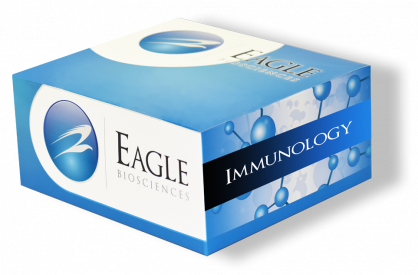Anti-GAD ELISA Assay Kit
Anti-GAD ELISA Assay Kit Developed and Manufactured by Medipan for research use only.
Size: 12 x 8 wells
Sensitivity: 0.4 U/mL
Incubation Time: 1 hour 45 minutes
Sample Type: Serum
Sample Size: 100 µL
Alternative Names: Glutamic Acid Decarboxylase
Control Included
Assay Background
Diabetes mellitus type 1 is a chronic autoimmune disease in which the insulin-producing beta cells of the islets of Langerhans in the pancreas are destroyed. The consequence of this destruction is a reduced insulin production, which results in high blood sugar levels as diabetes mellitus. Genetic predispositions and viral infections are considered risk factors, but the exact causes have not yet been fully clarified.
The destruction of the insulin-producing beta cells of the pancreas is based on the presence of islet cell antibodies (ICA), which are directed against different antigens of the pancreatic islet cells, such as glutamic acid decarboxylase (GAD65), tyrosine phosphatase (insulinoma-associated antigen 2, IA2), the zinc transporter 8 (ZnT8) and against insulin. Islet cell antibodies (ICA) can be detected in 70 – 80 % of samples with diabetes mellitus. The different antibodies usually appear months to years before the occurrence of elevated blood sugar levels and are therefore also considered important prognostic markers to identify samples with an increased risk of developing diabetes mellitus type 1. The combined detection of antibodies against GAD65, IA2, ZnT8 and insulin is considered an important method for diagnosing diabetes mellitus type 1 at the onset of the disease.
Glutamic acid decarboxylase (GAD) catalyzes the synthesis of the neurotransmitter GABA in the brain and in the beta cells. Two isoforms of the enzyme are known: GAD65 with a molecular weight of 65 kDa and GAD67 with 67 kDa, respectively. Antibodies directed against GAD65 are observed in the majority of samples with diabetes mellitus type 1 and in a large number of individuals in the prediabetic phase. In contrast, antibodies directed against both GAD isoforms are found in samples with the very rare neuromuscular Stiff-man syndrome.
Assay Principle
The ELISA (Enzyme Linked Immunosorbent Assay) is an immunoassay for the determination of specific antibodies. The strips of the microtiter plate are coated with test-specific antigens. If antibodies are present in the sample, they bind to the antigens. A secondary antibody conjugated with the enzyme peroxidase detects the generated immune complex. A colorless substrate is converted into the colored product. The signal intensity of the reaction product is proportional to the antibody activity in the sample. After stopping the signal intensity of the reaction product is measured photometrically.
Related Products
Anti-dsDNA ELISA Assay Kit
Anti-IA2 ELISA Assay Kit
Anti-CCP ELISA Assay Kit


